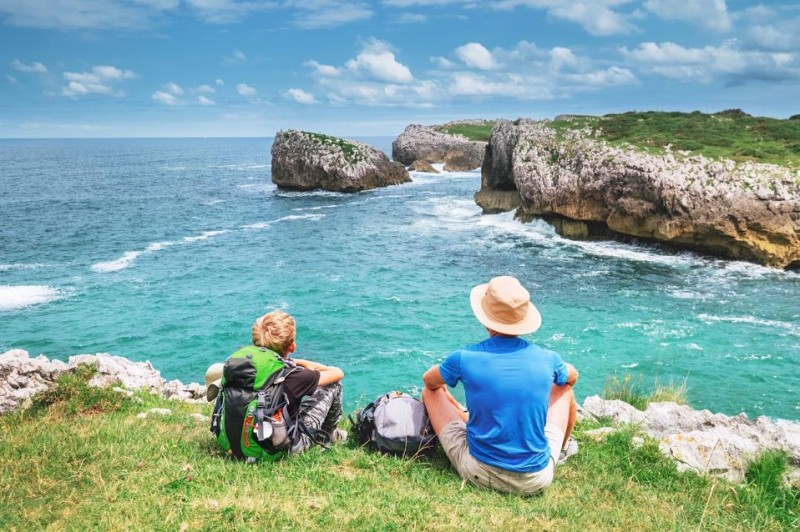
Discover the European Pilgrimage Routes: Out of Competition
The Camino de Santiago is the most famous pilgrimage route in Europe, often regarded as the top spiritual journey worldwide. It’s so popular that it stands apart from other routes.
In recent decades, the number of pilgrims heading to Santiago de Compostela has grown dramatically. In 2003, about 74,324 people completed the pilgrimage. By 2023, this number had surged to 440,370, and in 2024, a record 499,239 received the ‘Compostela’ certificate—an 11.9% increase from the previous year, according to Santiago’s Pilgrim’s Office.
Camino de Santiago, also called the Way of Saint James, has deep roots in Christianity and has been in operation since the 9th century. It’s a vast network of historic routes, created by travelers walking from their homes across Europe to gather at the cathedral in Santiago de Compostela, in northern Spain, where the remains of Saint James lie.
Many walk for religious reasons, but others do it as a mindful journey, a physical challenge, or to explore European culture, history, and landmarks. The route’s infrastructure is well-developed, with hostels, hotels, restaurants, and shops along the way. Walkers can choose to complete the full traditional route, which takes weeks, or opt for shorter, partial journeys based on their interests.
The Camino’s network resembles a river system—small brooks join to form streams, which then become larger rivers flowing toward Santiago. This organic growth began in the Middle Ages, as people simply set out from their homes toward the pilgrimage destination.
Ready for your own adventure? Book your next vacation with MWR LIFE and explore the legendary European pilgrimage routes. Embark on a meaningful journey through history and culture—an experience you’ll cherish forever.
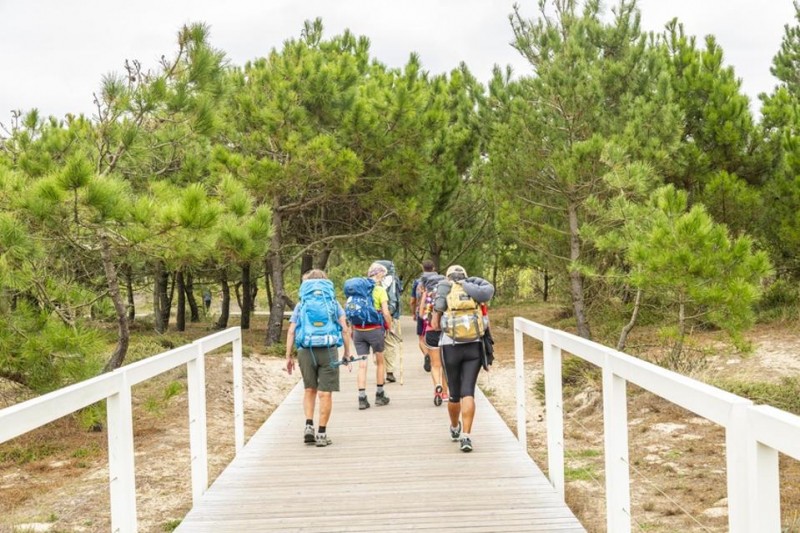
Journey along the Camino de Santiago — a legendary pilgrimage route in Europe.
The most popular route is the Camino Francés, covering 780 kilometers (around 500 miles) from St. Jean-Pied-du-Port near Biarritz, France, to Santiago de Compostela. This busy trail is especially crowded during summer.
The Camino Francés is connected to three other major French routes: Voie de Tours, Voie de Vezelay, and Voie du Puy. Along the way, it also links with other important paths, including Camino Aragones (via the Voie d’Arles crossing the Pyrenees), Camí de Sant Jaume from Mountserrat near Barcelona, Ruta de Tunel from Irun, Camino Primitivo from Bilbao and Oviedo, and Camino de Levante from Valencia and Toledo.
UNESCO recognizes the Camino as World Heritage. The route’s historical landmarks include pilgrimage churches, sanctuaries, hospitals, bridges, and crosses—all testaments to the spiritual and physical journey of pilgrims.
The pilgrimage is a spiritual act—a way to manifest faith and exercise devotion. It has also profoundly influenced art and ideas, shaping culture across Europe.
Another popular but less crowded route is the Camino Portugués. It traces the coastlines of Portugal and Spain, taking about a month to walk 620 kilometers from Lisbon to Santiago.
Alternatively, there’s a shorter route from Porto, covering 265 kilometers in 10 to 12 days.
Are you inspired to experience this historic journey? Book your next adventure with MWR LIFE and explore the European pilgrimage routes. Walk in the footsteps of history and discover a truly transformative experience.
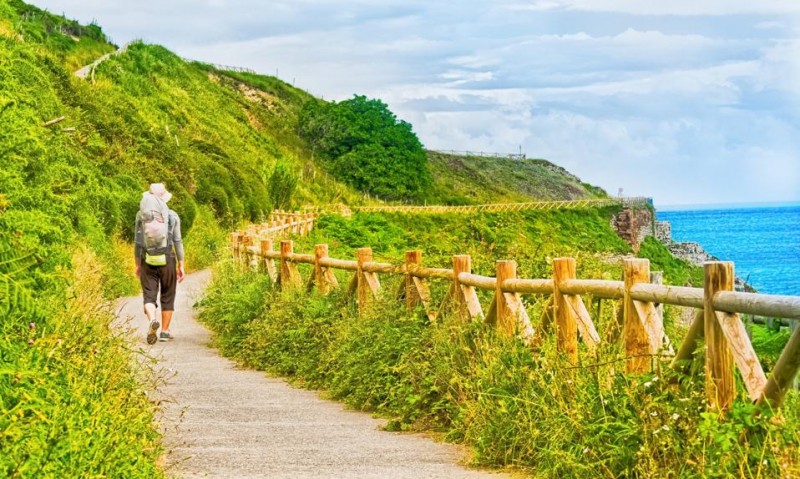
Explore the Camino de Santiago and its lesser-known paths—amazing journeys for spiritual seekers and adventure lovers alike.
The most popular segment is the final 100 kilometers from Sarria to Santiago, often walked by those wanting a meaningful experience without tackling the entire route.
But you don’t have to walk to Santiago to enjoy the pilgrimage. As The Telegraph notes, there’s no need to rough it in hostels or even walk. An e-bike journey, or simply exploring these routes in your own way, makes the experience accessible for everyone.
Lesser-known Paths for the Curious Traveler
Wool Route (Ruta de la Lana) in Spain stretches 700 kilometers from Valencia and Alicante to Burgos. Historically, it followed the route of sheep and wool merchants since before the Middle Ages.
Today, shepherds still travel these routes with large flocks, moving to milder coastal climates in winter or higher mountain pastures in summer. Along the way, you’ll see Romanesque churches and stunning landscapes, including Rio Dulce Natural Park and the canyon of Caracena.
Two towns, Cuenca and Sigüenza, are perfect for a rest day. Both are off the beaten path and rich in history.
Camino Primitivo, also called the Original Way, is the oldest route to Santiago, traced back to King Alfonso II in the 9th century.
Less than 5% of pilgrims choose this demanding path, but it offers spectacular mountain views and a chance to explore ancient Spanish villages. Starting in Oviedo, it takes travelers through lush peaks and valleys, with steep climbs and historic sites along the way.
Your Journey Awaits
Whether you prefer the classic route or one of these lesser-trodden paths, your personal pilgrimage can be tailored to your preferences.
Ready to experience this historic journey? Book your vacation with MWR LIFE and discover the magic of European pilgrimage routes. Embark on a transformative adventure—a pilgrimage that stays in your heart forever.
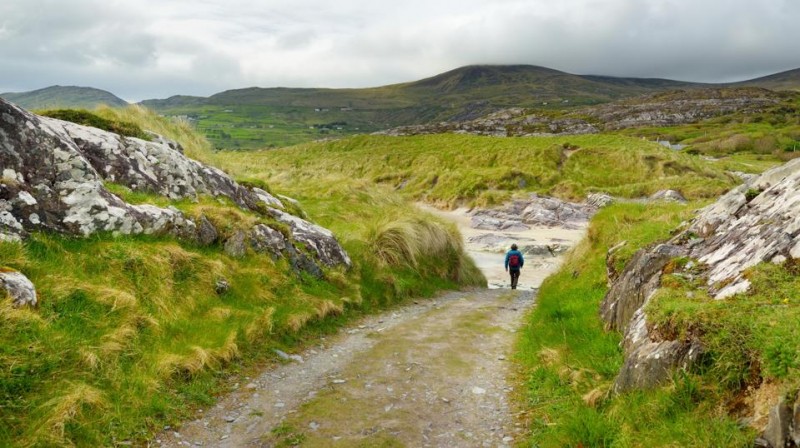
Abbey Island, the idyllic patch of land in Derrynane Historic Park in County Kerry, Ireland
Kerry Camino, Ireland
On their long way to Santiago in the Middle Ages, Irish pilgrims would head to St. James Church in Dingle and from there sail to northern Spain to continue their walk.
Modeled on the Camino de Santiago and linked to sixth-century St Brendan, the Kerry route starts in Tralee and winds down Ireland’s Dingle Peninsula, which has some of the most dramatic scenery and coastlines. On the way, hikers pass ancient oratories, beaches, lively pubs, wave-bashed shores and some places to get pilgrim passports stamped.
Via Jacobi (Jakobsweg), Switzerland
Starting in Lake Constance and going to Lake Geneva, this 450-kilometer stretch of the Camino de Santiago has been described as one of the most majestic. The Via Jacobi slides along the foot of the Alpine chain, through historic churches, monasteries and chapels, – including the UNESCO-listed St Gallen — hostels and lake-hugging Interlaken and Lausanne.
Walkers are flanked by the Central Swiss Alps, the Bernese Oberland, the Freiburger Alps and Jorat’s endless forests and can choose between various paths or follow them in succession.
Via Francigena, Emblematic European Pilgrimage
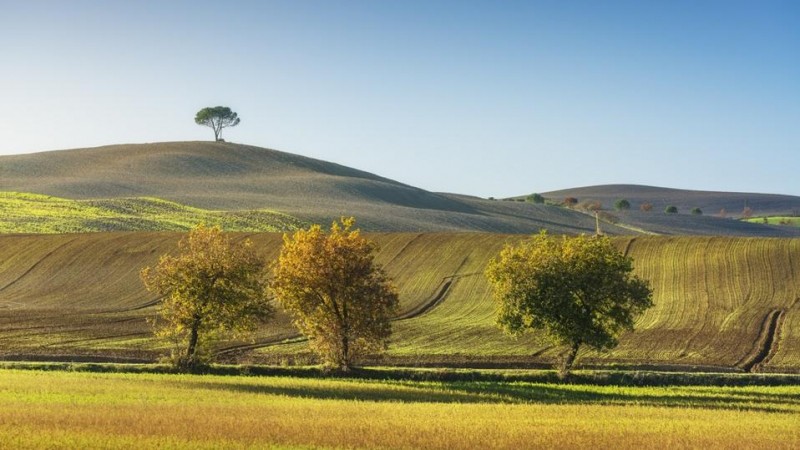
Monteroni d’Arbia’s fields along the route of the via Francigena in Siena, Tuscany
Another emblematic pilgrim route, also spread around different European countries, traces that described by Sigeric, then-Archbishop of Canterbury, on his return from Rome in AD 990.
It focuses on the meanderings of St. Francis of Assisi, born in his namesake town of Assisi in Umbria in 1181, founder of the Franciscan order, and one of the most venerated Italian saints who lived a life of utmost poverty and penance, loved nature, saved animals and was said to perform miracles.
Then there’s the very challenging 1,200-kilometer pilgrimage from the UNESCO-listed Gothic Canterbury Cathedral (where Thomas Becket was killed in 1170) to Santa Maria di Leuca in Puglia, Italy, with crossings through France and Switzerland via breathtaking vineyards, flowing rivers, forests, olive tree-blanketed hills and the snow-covered Alps. Medieval towns, gothic abbeys and castles grace that route.
The most popular sections of the Francigena are the Italian stretches that include gorgeous towns including Monteriggioni, San Gimignano and Siena.

Via Francigena signpost in front of a sunflower field in central Tuscany
Pilgrim’s Way
An alternative ancient route also related to Thomas Becket and followed by many medieval pilgrims, the Pilgrim’s Way connects Winchester’s massive cathedral to the shrine of the martyred archbishop in Canterbury via the River Itchen, the Surrey Hills and the Kent Downs, first following St Swithun’s Way and then the North Downs Way with woods, water meadows and vineyards, priories, burial chambers and medieval inns along the way.
St Olav’s Way, Norway and Sweden
St. Olavsleden (St. Olav’s way) is one of the world’s northernmost pilgrim paths, extending for 564 kilometers from the Baltic Sea in the east to the Atlantic Ocean in the west, through Sweden and Norway and eleven municipalities.
It follows the steps of Olav Haraldsson, the Viking king of Norway from 1015 to 1028, who brought Christianity to the country, and runs from Sundsvall in Sweden to Nidaros Cathedral, his burial place in fjord-side Trondheim, Norway. Pilgrims follow various Ways to reach his tomb.
From verdant forests to majestic fjords, each step is an ode to nature and serenity.
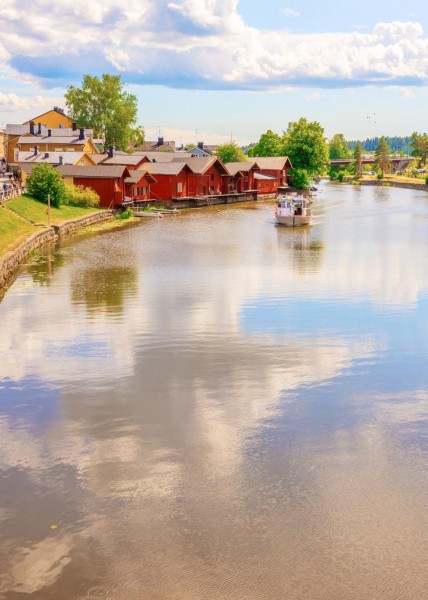
St Olav’s Waterway in Finland: Porvoo, a popular destination with it’s old wooden houses and shops
St Olav’s Waterway, Finland
This strand of St Olav’s Waterway takes walkers island hopping from medieval Turku and its cathedral on the Finnish mainland through the Finnish archipelago, one of the most beautiful in the world, via Åland – the islands of peace.
It’s a pilgrimage-cum-ferry hop across some of the Finnish Archipelago’s 20,000 isles, passing charming harbours and churches. From there, committed pilgrims continue into Sweden. Once there, travelers can choose from several alternative routes to reach the final destination of Trondheim in Norway.

Some start a pilgrimage route for spiritual reasons; others find spiritual fulfilment along the way.
Most people set out on an European pilgrimage for spiritual reasons, others find spiritual fulfilment along the way. Undeniably, reaching the final goal is as rewarding as any of the beautiful journeys that lead to them.
